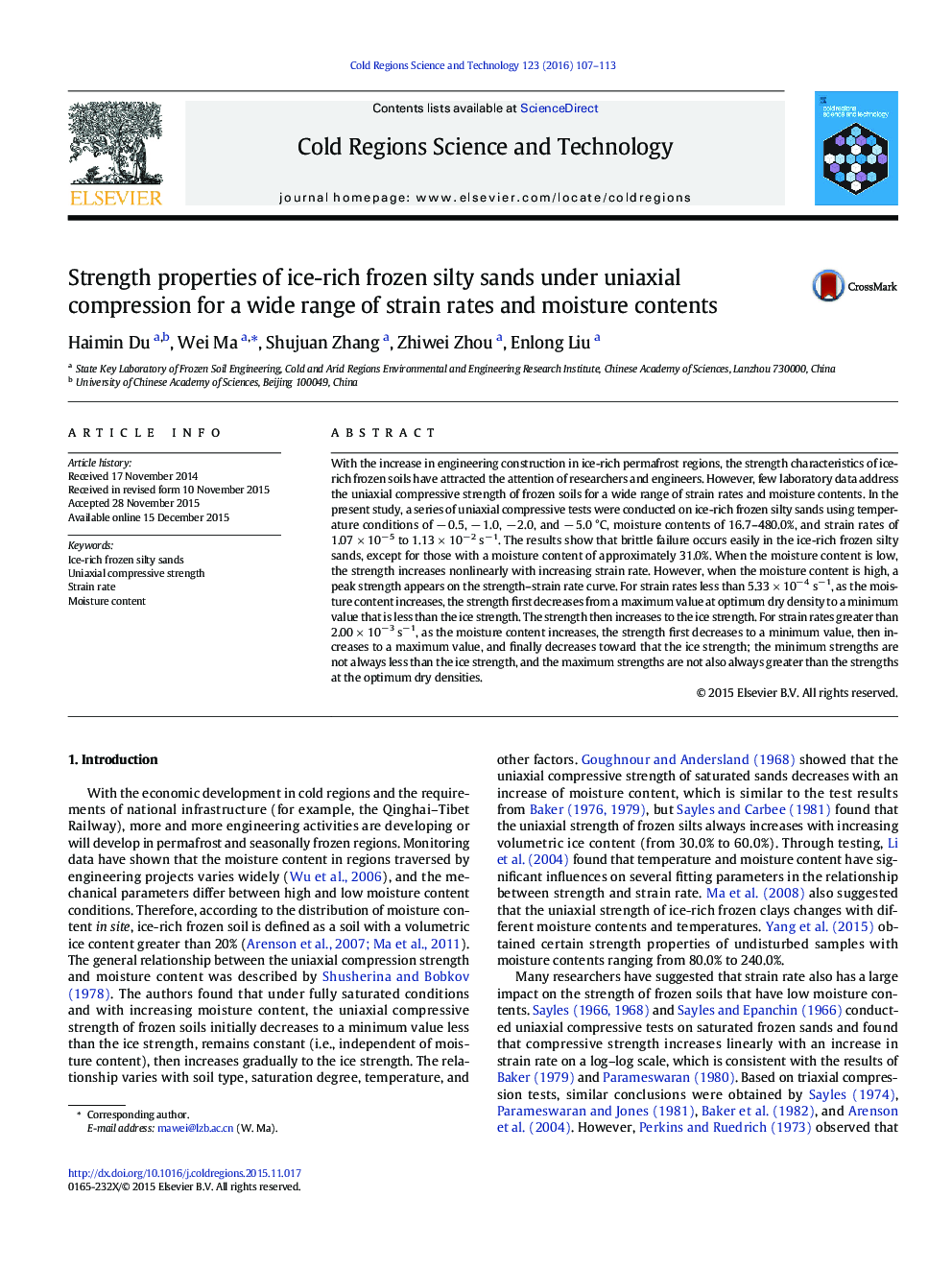| Article ID | Journal | Published Year | Pages | File Type |
|---|---|---|---|---|
| 6426605 | Cold Regions Science and Technology | 2016 | 7 Pages |
â¢Brittle failure occurs easily in ice-rich frozen silty sands.â¢Strength increases nonlinearly with increasing strain rates at low moisture contents.â¢For high moisture contents, there is a peak strength on the curve of strength-strain rate.â¢The relationship between strength and moisture content depends on the range of the strain rate.
With the increase in engineering construction in ice-rich permafrost regions, the strength characteristics of ice-rich frozen soils have attracted the attention of researchers and engineers. However, few laboratory data address the uniaxial compressive strength of frozen soils for a wide range of strain rates and moisture contents. In the present study, a series of uniaxial compressive tests were conducted on ice-rich frozen silty sands using temperature conditions of â 0.5, â 1.0, â 2.0, and â 5.0 °C, moisture contents of 16.7-480.0%, and strain rates of 1.07 Ã 10â 5 to 1.13 Ã 10â 2 sâ 1. The results show that brittle failure occurs easily in the ice-rich frozen silty sands, except for those with a moisture content of approximately 31.0%. When the moisture content is low, the strength increases nonlinearly with increasing strain rate. However, when the moisture content is high, a peak strength appears on the strength-strain rate curve. For strain rates less than 5.33 Ã 10â 4 sâ 1, as the moisture content increases, the strength first decreases from a maximum value at optimum dry density to a minimum value that is less than the ice strength. The strength then increases to the ice strength. For strain rates greater than 2.00 Ã 10â 3 sâ 1, as the moisture content increases, the strength first decreases to a minimum value, then increases to a maximum value, and finally decreases toward that the ice strength; the minimum strengths are not always less than the ice strength, and the maximum strengths are not also always greater than the strengths at the optimum dry densities.
